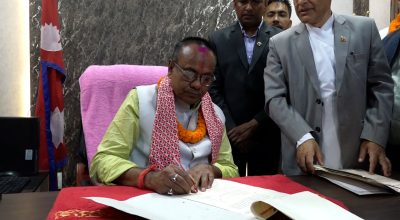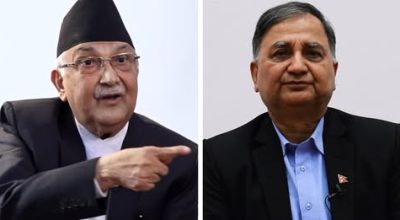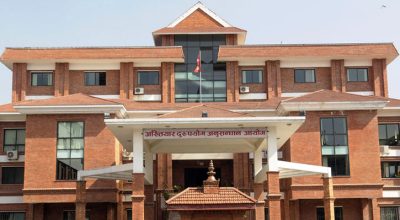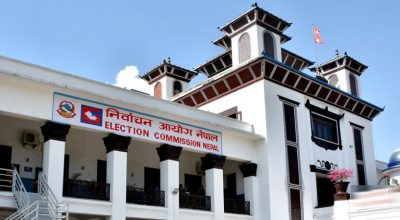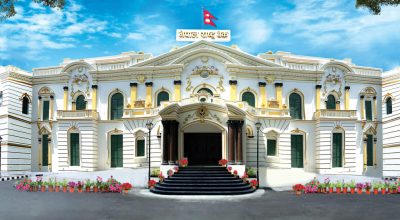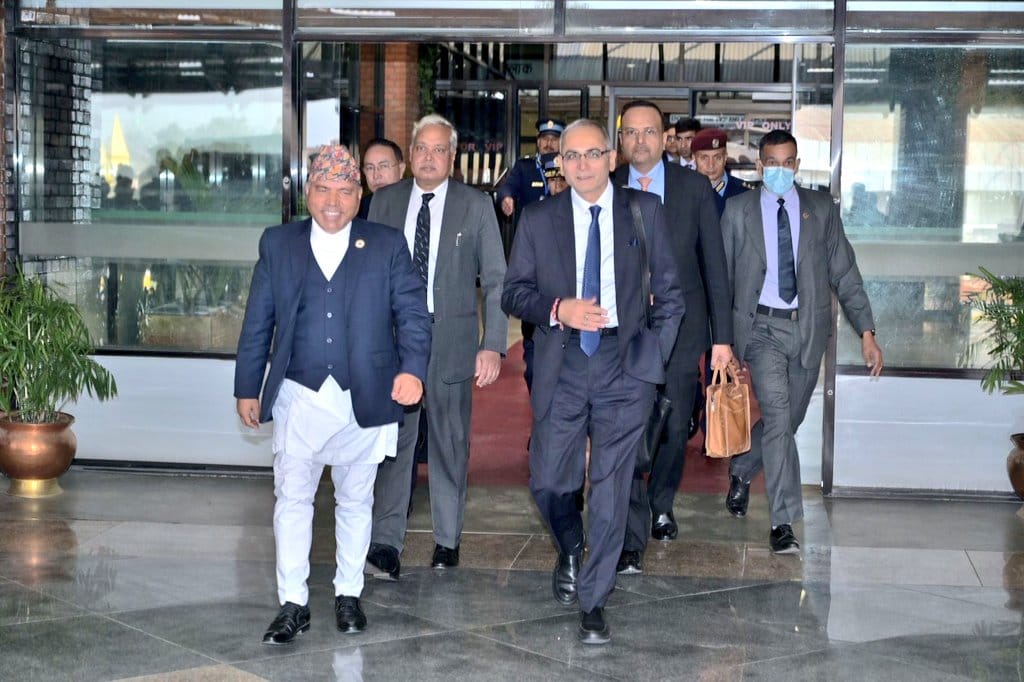
Chandra Dev Bhatta
When two large stones – the Shilas – from Kaligandaki River, situated in the western Nepal, a region famous for Shaligram stones, were transported to Ayodhya to carve out Murtis of Ram Lala, Sita Maya and Laxaman ji in January-February this year for the upcoming Ram Mandir – it was a great symbol of religiosity and cultural oneness. More importantly, this also reminded that geographical borders become less relevant when it comes to the point of civilisational factors/values which certainly has strong capacity to bring the states and people together despite having differences in other areas.
Also, while the Shilas were being transported from Nepal, people lined up on the roadside to offer their worship until they reached to the destination – Ayodhya. However, bringing such ‘stones’ from each other’s country is not something new. For example, people living in the Far Western part of Nepal have been bringing holy stone(s) from Dev Prayag – a city located by the side of confluence of two rivers –Alaknanda and Bhagirathi – after which they become Ganga – to establish deity in their villages for many, many years.
Among others, Nepal-India relations, from time immemorial, till today, has been guided by what may be referred as 5G factors – Gai (cow), Ganga (the river Ganges), Gaya (place of pilgrimage in UP), Gayatri (the holy mantra from Rig Veda), and Gotras (the lineage defined by the Vedic Rishis). Whether one agrees or not, they may not be as important for the modern secular states, as they are for larger society whose day-to-day life is influenced by them and thus have potential to unite people of these two civilizational states – Nepal and India – as they did in the past in one way or the other.
By and large, the spiritual and cultural connectivity has played an important role in keeping the relations intact not only at the people’s level but also between the mighty Himalayas and the Ksheer Sagar (the sea) that connects Shiva with Shankar or in other words while the former is the resting place of Lord Shiva, the Ksheer Sagar, for its part, is that of Lord Vishnu.
The Geopolitical Vortex
Situation, however, is changing in recent years in more than one way. Both Himalayas and Ksheer Sagar are increasingly becoming geopolitical flash points if not the battle ground and spurring their own momentum if not the tension in the region. Neither Nepal nor India can remain aloof from the possible fall out of such momentum. In that regard they are likely to have consequences in reshaping the relations between the two neighbours in the days to come and, to some extent, it is already noticeable.
Many scholars and commentators projected possible geopolitical fall out in the region, not now, but in 1950s including the late Times of India editor Giri Lal Jain who, has said that India would meet China in Nepal. The fact is that it is not only China, but India is meeting many other actors in Nepal. Taking cue from it, what might have changed, over the years, is the content or modus operandi but not necessarily the geopolitical context which largely remains the same.
This is so because the resident powers (the US and its allies) and the re-emerging power (mainly China) have entered into a new phase of power (re)configuration and in that course many countries have come into the limelight. While the US is making every effort to maintain status quo in the region, China, for its part, feels that the region is its legitimate courtyard. For that purpose alone, both have developed their own geopolitical tools under the garb of connectivity and economic development.
While the US has come up with Indo-Pacific Strategy (IPS) and its other paraphernalia in the seashore and littoral states, the Belt and Road Initiative (BRI) of China appears to have been making its presence largely felt in the Himalayan region. Yet in either case, countries like Nepal are torn between, what may be referred as great power rivalry. Neither can they say no to IPS (which is already underway) nor can they say no to BRI (in fact, Nepal is already part of BRI).
Yet repercussions of that rivalry are well reflected in Nepal-India relations as well. The non-aligned foreign policy which Nepal (India abandoned long-time back) has adopted to stay away from such a rivalry is losing its relevance not only due to the changing tides of geopolitics but also due to globalization. Moreover, the geopolitically charged initiatives of development have made the region more volatile than ever before and it is increasingly becoming difficult for the neighbours like Nepal and India, who enjoy unique relations, to strike a right balance in maintaining and upkeeping that uniqueness in their relationship.
Dawn of Third Actors
What certainly can be said is that geopolitics has emerged as the ‘third actor(s)’ which is playing crucial role in defining and redefining the relations between the two neighbours and dealing with these multiple actors – both state and non-state, is becoming the Achilles heel not only for Nepal but also for India. In fact, entire Himalayan region has, once again, become a geopolitical epicentre.
Apart from that domestic politics are not favourable, at least, in Nepal where political parties appear to have been instrumentalising foreign policy for their own benefits. Compared to Nepal, India, certainly is in a better position but the possible polarisation in domestic politics in future and challenges of managing multiple power centres at the global level would create its own dynamics.
All taken together, the fall out of geopolitics in the region demands that both Nepal and India should be more cautious in dealing with each other’s concerns. But that has not been the case always. In fact, after the promulgation of the constitution in 2015 and subsequent disruption in supplies of essential goods from the part of India to Nepal and the map episode of 2020-21 of Nepal should be taken as the two biggest foreign policy blunders while geopolitics was just in the process of remaking in the region in more than one way.
In fact, the constitutional process was Nepal’s entire domestic issue, the map episode, for its part, certainly could have been resolved through diplomacy and dialogue but that did not happen for the reasons so far unknown. In contrast, the relations fell all time low despite having civilisational, familial, and cultural closeness.
Enhancing the relations
However, relations between the two countries, once again, appears to have been moving in the right direction. Earlier, Nepalese foreign secretary Bharat Raj Paudel paid an official visit to New Delhi and this week Indian foreign secretary Vinay Mohan Kwatra was in Kathmandu. Kwatra’s visit took place at a time when Nepal has witnessed series of visits from the western countries.
And it was also the time when Nepal is about to elect new President for the next five years – after Nepal went through national election earlier in 2022. Many analysts equate Kwatra’s visit with the upcoming Presidential elections. For them, the visit is a more political than the diplomatic one. But this is only partly true. While the Prime Minister’s position in Nepal has become very much insecure due to frequent changes of the government and ad hoc power sharing arrangement political parties come up with, the position of President, has become more important and seen as stable institution to work with in the time of crisis.
This perhaps is the reason, why both internal and external actors have put high premium in the Presidential election. By and large the Indian foreign secretary’s visit is to take stock and feel the political pulse in Kathmandu. The way politics is unfolding in Kathmandu, there are high chances that, once again, the country may have to go through serious political instability. This may also be the reason, among others, why there has been series of visits form the Western countries as well as from China . For Nepal – India relations, the visit certainly is much needed as visits like this between the two countries have surprisingly thinned in recent years But frequent consultation is necessary to sort out contentious issues related to the border, the recruitment of Nepalese into Indian army through Agnipath scheme (which has been stalled), and new air routes among others.
The political economy as well as the new geopolitics is not necessarily favourable to special relations between Nepal and India. These factors are overshadowing all other relations including the cultural ones. Yet India certainly can play better role to further cement the relations.
India, today, has become the fifth largest economy in the world and it has gained capacity to exert significant impact in world politics. The G20 presidency that it has taken over can create conducive environment and create benefits for the countries like Nepal. That being said, India sometimes does not push the interests of smaller neighbours like Nepal.
For example, Nepal has recently built two international airports: one in Pokhara and another in Bhairahawa – a small town close by India but in the absence of air routes, chances are such that they may collect debt and eventually become unproductive. This also makes Nepal not only ‘landlocked’ but also ‘airlocked’. Perhaps, it would be prudent to discuss the concern and issues, if there are any, openly and make the situation favourable for both the countries.
One fourth of Nepal’s total population have been working or living outside of Nepal and India. They can largely be found in countries like South Korea, West Asian countries, Southeast Asian countries, and the Western world. People working in these countries have their own world view and cultural factors have little appeal. While people need economic opportunities and development for their survival, Nepali state, for its part, requires to strike a right balance in the neighbourhood.
Sadly, the much-needed economic opportunities for its bulging youth population (largely educated) is coming from third countries. This is the reality that we all have been living with and for those third countries who are providing economic opportunities today will , for sure, have geopolitical interests as well in the future.
If that happens, situation certainly will not be favourable neither for India nor for Nepal. All said, the most important factor under these circumstances would be that India being a powerful country should try to take Nepal on board and extend help (as it has been doing).
Being a small state, the sentiment and emotions of people is very high in Nepal and that can alone be managed creating economic base and providing employment opportunities which, in turn, can be the best for these two civilization states to maintain the special relations in the long-term. In addition to this, all pending bilateral issues should be dealt with high speed so that they cannot be used for the political sloganeering.
Source: https://www.outlookindia.com/national/nepal-india-relations-trapped-in-geopolitical-vortex-news-262745





